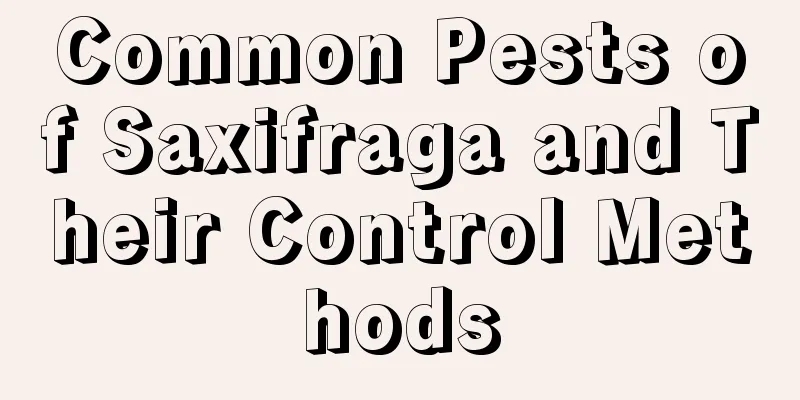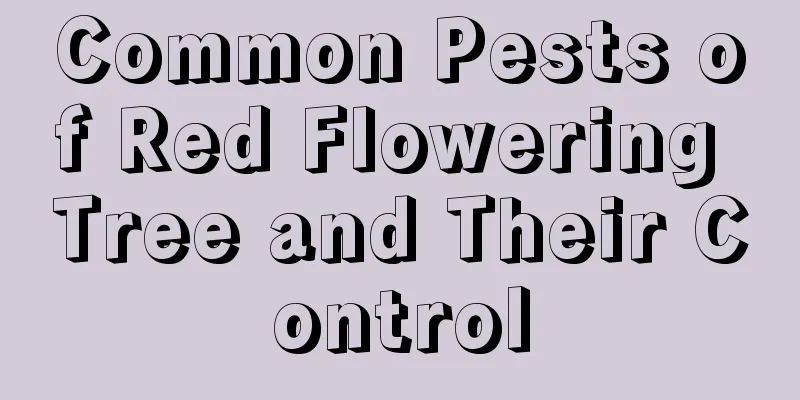Common Pests of Saxifraga and Their Control Methods

Common pests of saxifrage: mealybugsPest symptomsFemales and larvae cluster on the underside of leaves, sucking the sap. The male insects have wings and can fly. The leaves that have been sucked by the sucker look like they have spider webs. The leaves are shriveled and dry, with only some veins left, which looks very ugly. Mealybugs have white sticky powder on their bodies, which can contaminate the leaf surface and induce other diseases. Prevention and treatment methodsWhen purchasing, introducing, transporting, or giving away Saxifrage, careful inspections must be carried out to prevent the introduction of insects to prevent their spread. Choose the most suitable potting medium and disinfect it scientifically. For example, composting soil and other organic matter must be fully fermented and sterilized at high temperature or with chemicals to kill insect eggs or reproductive mothers. During the peak hatching period of nymphs, spray or root irrigate with 1000 to 1500 times dilution of 40% Suposu EC or 700 to 800 times dilution of 25% Aikas EC. Common pests of saxifrage: whitefliesPest symptomsAdult nymphs suck the juice of leaves, fruits and young branches. The affected leaves develop green yellow-white spots. As the damage worsens, the spots expand into patches, and then the entire leaf turns pale and falls off early. The flavor quality of the affected fruit is reduced, and young fruits often fall off when the damage is serious. Excreting honeydew can induce sooty mold disease. Prevention and treatment methodsEarly stage pests: When whiteflies occur sporadically, start spraying 1500 times diluted 20% cypermethrin wettable powder or 1000 times diluted 25% acaricide emulsifiable concentrate, 3000-4000 times diluted 2.5% pyrethroid emulsifiable concentrate, 2000-3000 times diluted 20% cypermethrin emulsifiable concentrate, 1500 times diluted 10% imidacloprid wettable powder, once every 10 days or so, and carry out prevention and control 2-3 times in a row. Pests during the growth period: spray 50% Daofengsan EC 1500-2000 times diluted, 80% DDT EC or 40% Dimethoate EC or 50% Phosphamidon EC, 50% Malathion EC, 50%
|
<<: Diseases and pests of Rhododendron sabdariffa and their control methods
>>: Diseases and Pests of American Mint and Their Control Methods
Recommend
How to graft keel
1. Time Selection The time for cuttings should be...
Urea plus potassium dihydrogen phosphate as foliar fertilizer sprayed together (is it effective to use them together)
In addition to staple foods such as rice and nood...
How to plant green beans? Planting methods and management techniques
Green beans growing environment requirements Gree...
Banyan tree cultivation methods and precautions
1. Breeding methods 1. Temperature: It is a light...
The best time to repot juniper bonsai: suitable months and methods for repotting
The right time to repot juniper bonsai Juniper bo...
The symbolism and meaning of cactus flowers
1. Its flower language (1) Flower languages rel...
Sunflower Sclerotinia Control Methods
Sunflower Sclerotinia Types Sclerotinia disease i...
How to cultivate monkey face orchid
How to cultivate monkey face orchid soil Monkey o...
When and what fertilizer to use for orchids in spring
1. Fertilization in early spring In early spring ...
Cheeky Farming Methods
1. Soil The growth adaptability of the thick-skin...
How to grow spider plants and green radish quickly? The master teaches you how to grow a waterfall!
Chlorophytum First of all, I would like to introd...
The difference between azalea and rhododendron
1. Origin The Western rhododendron has a special ...
How to grow snapdragon in autumn
1. Supplement of light This type of plant is not ...
How to water Junzhilan? The correct method and skills of watering
Overview of Clivia Watering Clivia is a plant of ...
The difference between early blooming violets and Viola yedoensis
1. The flowering periods of the two are different...









